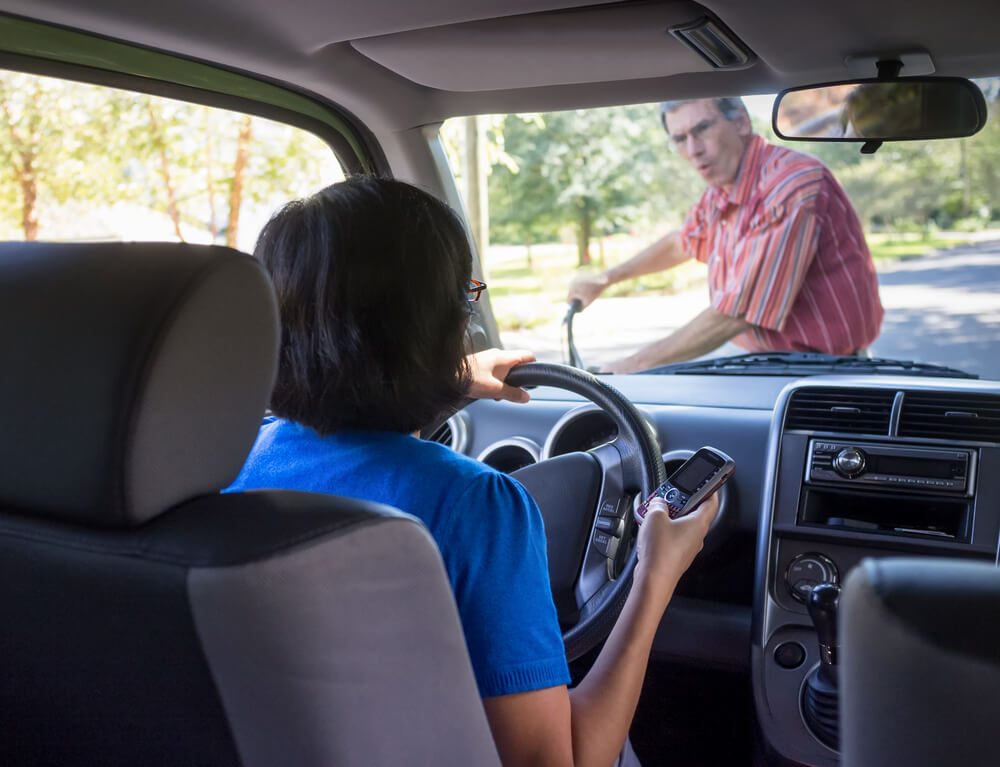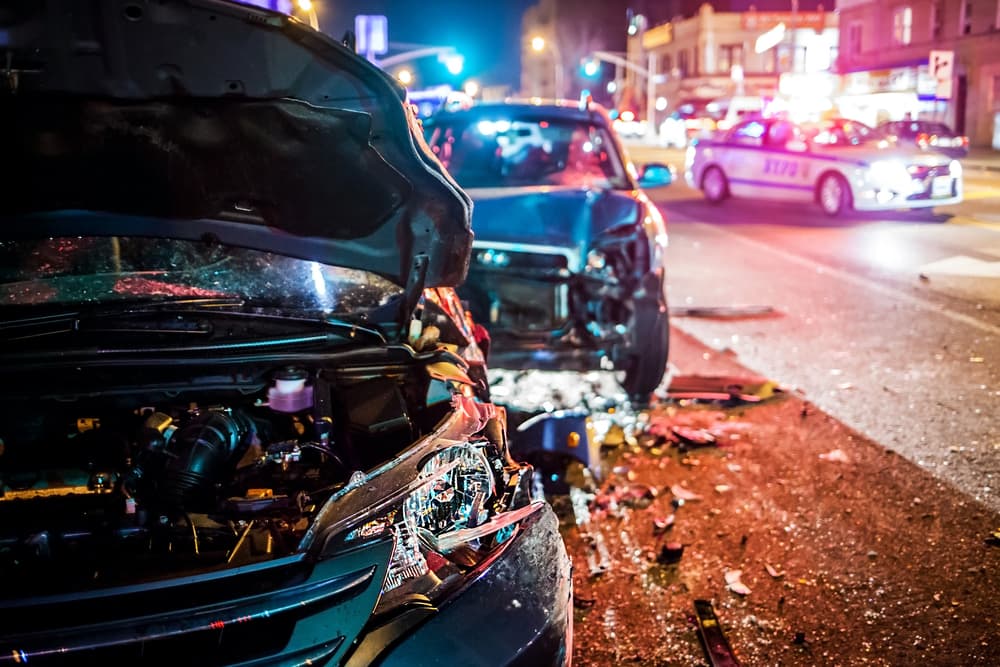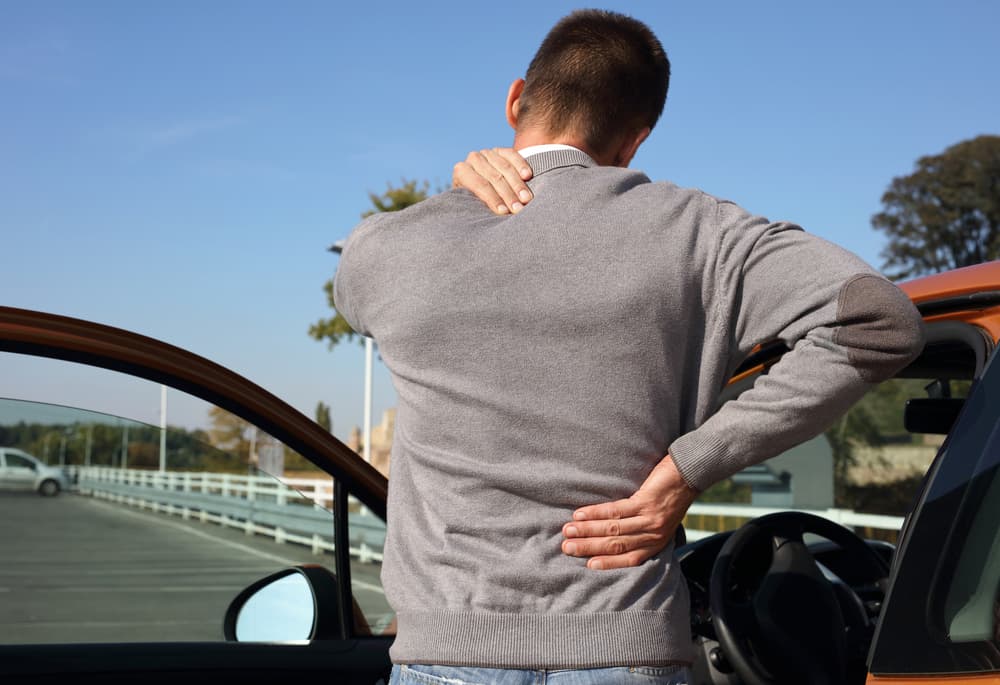The National Highway Traffic Safety Association (NHTSA) devotes ample time and resources to studying distracted driving, especially since cell phones arrived.
Many car accidents are minor fender-benders, and those involved walk away without injury. However, some auto accidents lead to serious injuries and fatalities. In such cases, it is crucial to seek the assistance of a car accident attorney to navigate the legal complexities of a car accident claim and ensure you receive the necessary support and compensation.
10 Common Types of Distracted Driving
Here are ten common driving distractions commonly seen in car accident claims.
1. Cell Phones

Cell phone use has been the fastest-growing, most problematic, and most common distraction for more than a decade. In recent research, they found that almost one-third of all motor vehicle crashes in the United States involve some type of driving distraction. NHTSA warns that drivers between the ages of 16 and 24 get distracted by devices at higher rates than older drivers.
Part of the problem with using a cell phone while driving is that it's a triple threat. The NHTSA and other government agencies that study distracted driving generally agree that any activity that takes your hands, eyes, or minds away from the wheel or road qualifies as a driving distraction. Cell phones do all three. Users need to take their hands off the wheel to use their phones. They must look at the phone to text or dial a number. Concentrating on these tasks takes their mind off the road.
Hands-free use helps reduce some of the risks, making this the law in many states. However, one could argue that using the phone takes a driver's mind off the task of driving even when their hands are on the wheel, and their eyes are on the road.
If you are involved in an auto accident, suffer injuries, and decide to take legal action, you can expect your car accident attorney to review phone records. Even if a driver did not receive an inattentive driving citation, phone records can show if they were texting or on a phone call at the time an accident occurred.
Truck drivers break federal law if they text and drive. Additionally, many states have a no cell phone use policy, even hands-free, for drivers under 18.
2. Radio/GPS
According to NHTSA, more than two-thirds of drivers admit to adjusting the car radio while driving. Depending on the age of the vehicle, adjusting the radio might be more of a distraction because drivers have to manually adjust the tuner or volume with a knob on the dash.
Most of today's cars have radio controls on the back of the steering column, eliminating the need for manual adjustments on the dash. And new cars are equipped with satellite radio and Bluetooth technology. It's rare to find a CD player. However, these technological advances have shifted the problem back to cell phones, where drivers pull up their playlists or podcasts.
The same is true of GPSs. Many vehicles come with navigation systems, or they have screens to display Google Maps or another navigation program from a cell phone. In older vehicles or stripped-down models, drivers typically mount their phones and rely solely on them for navigation.
It only takes a few seconds of concentrating on the screen to enter an address or correct Siri for drivers to lose control of their vehicle or cause a major accident. Drivers who frequently travel to unfamiliar locations, like rideshare drivers and truck drivers, are most vulnerable to getting distracted by their GPS.
3. Vehicle Features
Cars, trucks, and SUVs have various features that can distract drivers. Although it's not illegal to adjust vehicle features while driving, it can cause a dangerous distraction that leads to severe traffic collisions. At the very least, drivers must take one hand off the wheel to adjust most features. Sometimes, adjustments also require drivers to take their eyes off the road.
Vehicle features that distract a driver include:
- Moving the seat forward or backward or adjusting the incline
- Adjusting the temperature
- Opening or closing a sunroof or moonroof
- Removing or engaging a seatbelt while driving
- Adjusting air vents
- Resetting the odometer
Safely operating a vehicle means adjusting all vehicle features before driving or waiting until stopped to make any changes. Those distracted by vehicle features put others who share the road at risk for accidents and most commonly injuries.
4. Personal Grooming
Although personal grooming while driving doesn't occur as often as some of the other distractions on this list, it does happen. It's also heavily skewed toward young female drivers, especially grooming related to hair. Drivers have to take at least one hand off the wheel, but sometimes drivers take both hands off and balance the wheel with their knees.
Personal grooming can include many different behaviors. However, it most often includes brushing, combing, and/or styling hair, and applying make-up. You might have seen someone engaging in this dangerous driving behavior while driving in traffic.
As you glance at another vehicle, you notice the driver is applying eye shadow, bronzer, mascara, or something else while driving. Or, they have both hands working to put their hair up. The use of the rearview mirror can make personal grooming while driving more dangerous.
People who engage in this behavior often move their rearview mirror to provide a better view of their head, taking away their ability to glance behind their vehicle.
5. Eating/Drinking
Before cell phones, eating and drinking while driving were top distractions. In today's busy world, with fast-food drive-throughs around every corner, eating and drinking is still a major distraction that can lead to an accident. While legal, these actions can lead to dangerous accidents.
Any sandwich, snack, or meal that someone grabs for the road requires taking at least one hand off the wheel to eat. Sure, motorists drive with one hand all the time. However, drivers need both hands on the wheel to avoid an accident if another vehicle cuts them off, slams on their brakes, or an animal jumps into the road.
Most of today's vehicles have cup holders next to the driver. So, drinking out of a coffee cup or straw can happen quickly without too much distraction. However, opening water bottles, soda bottles, and other containers can be a significant distraction that leads to a dangerous motor vehicle crash.
6. Reaching for Items
Reaching for something in the vehicle takes one or both hands off the wheel and often eyes off the road. It only takes a second or two for an accident to occur, making this behavior a dangerous distraction.
Reaching for items on the floor or in the back seat is often related to other distractions. For example, a driver opens up a bottle of soda to take a drink and drops the cap on the floor. They quickly reach down to pick up the cap, putting themselves and others in danger. Similarly, a driver might reach in the back seat to grab a snack they brought.
Other times reaching for items in the car is related to work. A driver reaches for papers or a folder to review something while driving, piling one distraction on top of another. Dropped items are especially dangerous because people cannot easily locate them without taking their eyes off the road. They think they only look away for a second, but sometimes it's much longer.
7. Heated Discussions/Arguments
Many states prohibit new teen drivers from transporting more than one passenger for the first six months or years after obtaining their license. Talking and arguing with others can distract drivers easily, and new drivers cannot process all the information they need to safely operate their vehicles.
These distractions can lead to running a stop sign, running a stoplight, cutting others off, and various other dangerous situations. As people age and get more experience behind the wheel, they can typically handle light conversations while driving. However, heavy conversations, heated discussions, and arguments that involve a lot of emotional energy easily take the focus away from the road. Examples include lecturing kids, arguing with a partner, and discussing passionate topics.
Rideshare and taxi drivers are among the most vulnerable to falling victim to distractions from conversing with passengers. Some riders are chatty while the driver is trying to get them to the right location.
Other times riders have been drinking, or they are fighting with a backseat or front seat passenger. Obnoxious riders distract drivers and make it difficult for them to concentrate on the road at a time when they need to pay extra attention to ensure they get their riders to their destinations.
8. Tending to Backseat Passengers
Every parent, grandparent, or other adult who has driven with kids in the backseat understands how tending to passengers can distract drivers. This driving distraction is often related to having children in the vehicle because adults in the back seat typically do not need assistance.
Most drivers know they should stop and deal with issues, but sometimes stopping isn't convenient or possible. Instead of waiting, drivers reach in the back seat to find the toy or snack, grab the bottle out of the diaper bag, or get something else to hand to their infant, toddler, or small child.
In some cases, siblings might fight in the backseat, and the driver reaches back or turns around to stop the fighting. Regardless of the reason, tending to backseat passengers requires taking at least one hand off the wheel and typically involves turning around and taking eyes off the road, creating dangerous conditions that could lead to a distracted driving accident.
9. Watching an Event Outside the Vehicle
NHTSA estimates more than 40,000 people die in fatal car crashes on the nation's roads each year, and millions more crashes, from minor fender benders to severe crashes, lead to bodily harm. Some of those crashes occur because vehicles are driving by another crash and get distracted. Many events on the road can draw attention that distracts drivers. However, traffic crashes are the most common.
People automatically look at the damage on the vehicles involved in a crash. They look to see if anyone is in the vehicle. They also take note of emergency vehicles that might be present.
Traffic crashes stop nearby traffic or slow traffic. These stop-and-go conditions require extra attention to avoid rear-end collisions and other erratic drivers. Focusing on an event outside the vehicle involves taking the eyes off the road and often breaks mental focus. Other events or situations that might distract drivers include fires, billboards, animals, roadside attractions, road construction, and vehicles pulled to the side of the road.
10. Daydreaming
Daydreaming occurs because of the way the human brain is wired. The brain sorts through millions of signals and prioritizes the most important ones. For example, you don't notice things to your side unless something moves. This sorting process protects us from sensory overload. However, the result is a relatively narrow attention span and a wandering mind. It takes a conscious effort to focus on driving to avoid daydreaming and avoid the accidents that daydreaming can cause.
The most dangerous part of being distracted by daydreaming is that a driver can feel completely aware of their environment but lack a conscious connection with their environment. Think of a time when you suddenly came to attention when you were behind the wheel. Maybe an animal or a young child came into the road. Other times you know you were daydreaming if you get home and struggle to remember parts of your trip. In such situations, it is important to seek the assistance of a personal injury lawyer in Myrtle Beach who can provide the necessary legal guidance and support to protect your rights.
How to Seek Justice After a Car Accident in South Carolina
Being involved in a car accident can be a traumatic and overwhelming experience, especially if your accident is due to someone else's distracted driving. Car accident victims who suffer injuries in a Myrtle Beach car accident should know how to seek justice and obtain compensation for their injuries. Here are some steps to take after a car accident to protect your rights and build a strong case.
Step 1: Prioritize Your Safety and Health
Immediately after the accident, check yourself and others involved for injuries. Call 911 if anyone needs medical treatment. If it's safe to do so, move your vehicle to the side of the road to avoid further accidents. Even if you feel fine, it's essential to seek medical treatment as soon as possible after a vehicle collision as some injuries may not be immediately apparent.
Step 2: Gather Evidence
If you're able, document the accident scene by taking photos of the damage to the vehicles, any visible injuries, and the surrounding area. Collect contact and insurance information from the other driver(s) involved. If there are witnesses, ask for their names and contact details as their statements can be valuable for your case.
Step 3: File a Police Report
Contact the Myrtle Beach Police Department to file an accident report. Provide a clear, honest account of what happened without admitting fault. Obtain a copy of the police report for your records, as it will serve as an official document of the incident.
Step 4: Notify Your Insurance Company
Inform your insurance company about the accident as soon as possible. Stick to the facts and avoid speculating about fault. Be cautious when speaking with the other party's insurance company, as they may try to use your statements against you to minimize their payout.
Step 5: Consult with an Experienced Car Accident Attorney
To ensure your rights are protected and to maximize your chances of obtaining fair compensation, consult with a skilled Myrtle Beach car accident attorney. Look for a law firm with a proven track record of success in handling car accident cases, like Morris Law Accident and Injury Lawyers. Your attorney will help you navigate the legal process, gather additional evidence, negotiate with insurance companies, and fight for the compensation you deserve.
Step 6: Keep Detailed Records
Maintain a file with all documents related to the accident, including medical bills, repair estimates, and correspondence with insurance companies. Keep a journal of your recovery process, noting any pain, limitations, or emotional distress you experience. These records will be essential in building a strong case and demonstrating the extent of your damages.
Injured by a Distracted Driver? Contact our South Carolina Car Accident Attorney

Seeking justice after a car accident in Myrtle Beach requires careful action and the guidance of an experienced car accident attorney. By prioritizing your health, gathering evidence, and consulting with Morris Law Accident and Injury Lawyers, you can protect your rights and work toward obtaining the compensation you need to move forward. Remember, you don't have to face this challenging time alone—our dedicated team is here to assist with your personal injury claim and support you every step of the way.
Morris Law Accident Injury Lawyers
1335 44th Ave N Suite 101, Myrtle Beach, SC 29577, United States
(843) 428-6738








